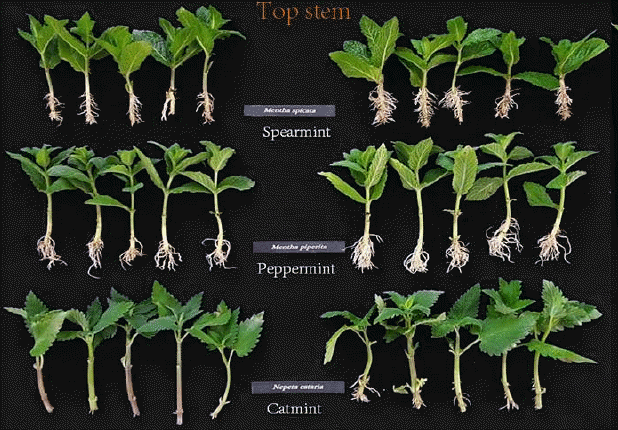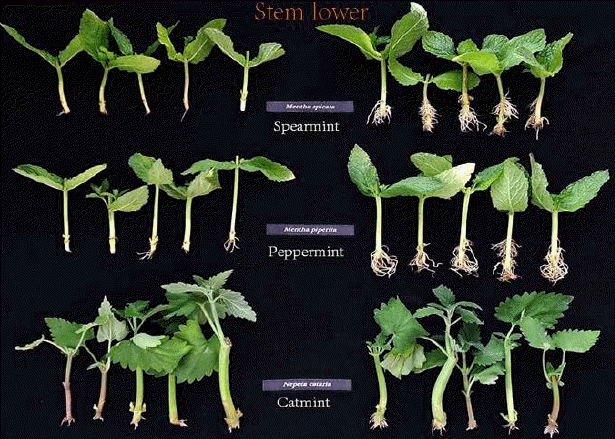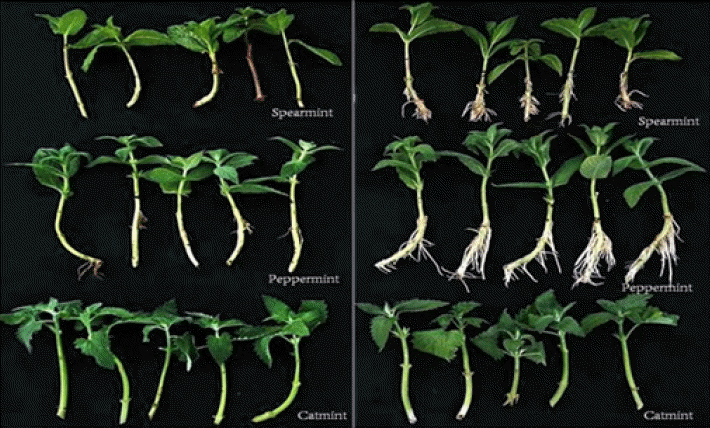Bouseta, A., V. Scheirman, S. Colin. Flavor and free amino acid composition of lavender and eucalyptus honeys. J. Food Sci.. 1996. 61(4):683-694. PMID:
10.1111/j.1365-2621.1996.tb12181.x

Bown, D. New encyclopedia of herbs & their uses. London, UK: Dorling Kindersley. 1995.
Chang, K.H. 2011. Effect of substrates and plant growth regulator on the rooting of Stevia rebaudiana Bertoni. MS Thesis. Seoul, Korea. Korea Univ,
EOAI (Essential Oils Association of India). 2001 http://nhb.gov.in/Horticulture%20Crops%5CMint%5CMint1.htm
Gislerod, H.R. Physical conditions of propagation media and their influence on the rooting of cuttings. I. Air content and oxygen diffusion at different moisture tensions. Plant Soil. 1982. 69(3):445-456. PMID:
10.1007/BF02372465

Han, C.T., K.Y. Park, J.P. Baek. Effect of substrate, rooting promoter and irrigation method on the root formation of rosemary (Rosemarinus officinalis) cutting. Poster session preseted at the 78th Fall Conference on Korean Soc. Hortic. Sci 2001;Korea.
Han, C.T. 2001. Effects of substrates rooting promoter and irrigation method on the root formation of rosemary cutting. MS Thesis. Korea Univ, Seoul, Korea.
Hartmann, H.T., D.E. Kester, F.T. Davies Jr, R.L. Geneve. Plant propagation: Principles and practices. (8th ed.). Upper Saddle River, USA: Prentice-Hall Inc.. 2010.
Im, M.W. 2011. Effects of cultivars, substrates and rooton on the rooting of thyme stem cutting. MS Thesis. Korea Univ, Seoul, Korea.
Kim, T.S. Effect of substrates and rooting promoter on rooting of marjoram (Origanum marjorana L.) and oregano (Origanum vulgare L.) cuttings. MS Thesis. 2001. Korea Univ, Seoul, Korea.
Kwack, B.H., D.B. Lee, K.M. Lee. Effects of NAA, IBA and Ethychlozate on rooting of Ficus benjamina and Ficus nitida stem cuttings. J. Kor. Soc. Hort. Sci.. 1989. 30(3):248-256.
Lee, C.H. 2012. Exports-imports and consumption pattern of herb and essential oils in Korea. MS Thesis. Korea Univ, Seoul, Korea.
Lee, G.H. 2006. Present status of internal and external export and import of spices. MS Thesis. Korea Univ, Seoul, Korea.
Lee, J.N. 1999. Effect of cuttings and substrates on rooting of several herbs. MS thesis. Korea Univ, Seoul, Korea.
Moon, Y.H. 2015. Effects of cutting condition and rooting promoter on rooting of Trachelospermum asiaticum. MS Thesis. Korea Univ, Seoul, Korea.
Mackay, A.D., S.A. Barber. Effect of nitrogen on root Growth of two corn genotypes in the field. Agron. J.. 1986. 78(4):699-703.

Olymbios, C.M., W.W. Schwabe. Effect of aeration and soil compaction on growth of carrot, Daucus carota L. J. Hortic. Sci.. 1977. 52(4):485-500. PMID:
10.1080/00221589.1977.11514779

O’Neil, K.J., R.N. Carrow. Perennial ryegrass growth, water use, and soil aeration status under soil compaction. Agron. J.. 1983. 75:177-180.

Park, K.W. 2000. Functional vegetable. Seoul, Korea: Herb world.
Park, K.W. Herb and aromatherapy. Seoul, Korea: Sunjinmunhwasa. 2007.
Park, K.W., C.H. Lee. Horticulture propagation. Seoul, Korea: Sunjinmoonhwasa. 1999.
Park, C.S., Y.S. Jung, J.H. Joo, J.E. Yang. Soil characteristics of the saprolite piled upland fields at highland in Gangwon province. Korean. J. Soil. Sci. Fert.. 2004. 37:66-73.
Shin, A.J. 2000. A study on the situation and development of herbal industry and aromatherapy in Korea. MS Thesis. Seoul, Korea. Korea Univ.,











